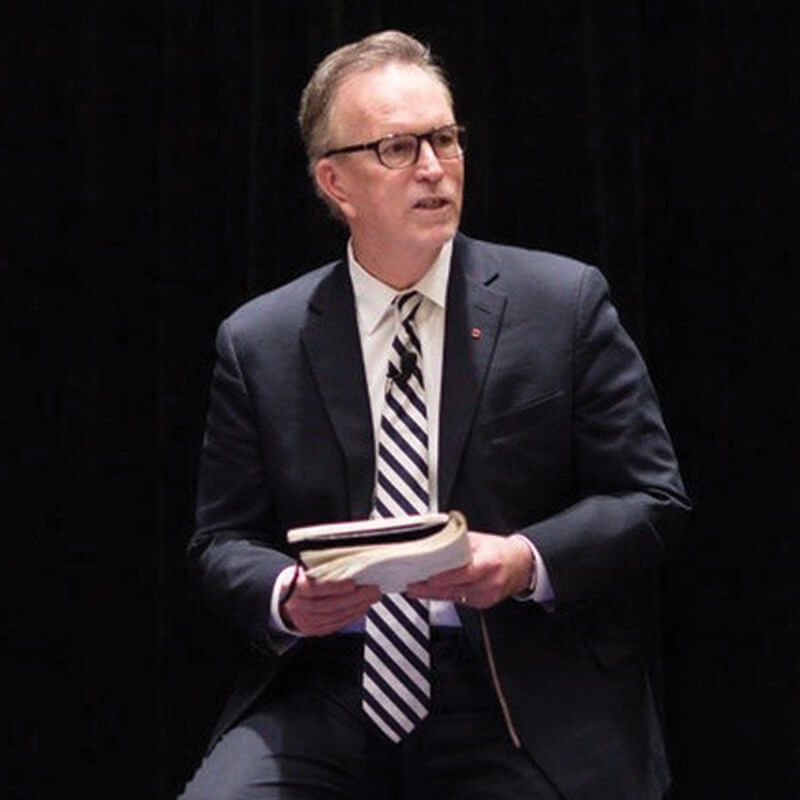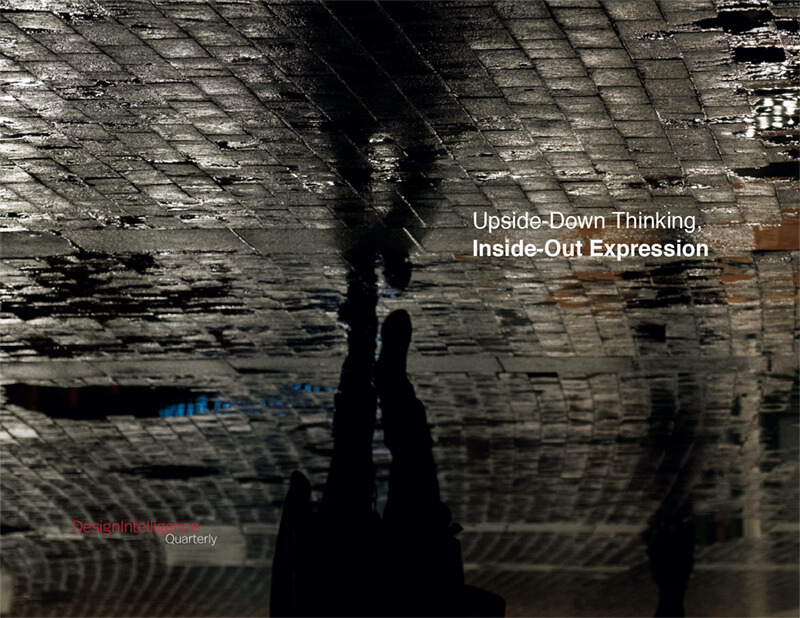Upside-Down Thinking,
Inside-Out Expression
by Dave Gilmore
President and CEO, DesignIntelligence
Can “right” be “wrong”? Can we upend legacy thinking?
The current COVID-19 period has turned the world, the nation, and the built environment industry on their heads. Few industries have been spared from negative impact due to this phenomenon. Whether directly or vicariously, every piece and part of the economy has felt the pain of this pandemic.
Being upside down presents new challenges doesn’t it? Everything seems disoriented and confused. The traditional right-side up security is now distorted as right seems oddly wrong.
We have a unique opportunity during this COVID-19 period to apply different thinking to the near future. Is there a better world out there we can’t see due to our right-side-up orientation? Is it possible by changing our orientation we will be able to solve many of the problems and challenges that have plagued us for too long?
Mark Holmgren offers a good description of Upside-Down Thinking,
“Upside-Down Thinking is both a mindset and a tool to use to look at things in a totally different way. One who is engaged in such thinking is bound to deploy wicked questions to be sure, but Upside-Down Thinking is a cognitive-creative methodology and is about more than crafting inquiry; it goes further to pose new realities or potential realities that run contrary to how we think and how we see our own identities within the context of our work. Moreover, Upside-Down Thinking has no loyalty to the status quo or to current tools or best practices. Its purpose is to give life to the contrarian within us and to see our world through eyes that wish to see something quite different from what is there.”
Inside-Out Expression is yet another change in expressive orientation. When we think inside-out we open the dialogue to a more voluminous voice… the voice within that never stops processing. One that is ever-seeking answers to the wicked problems asked through upside-down thinking.
Inside-Out Expression is normally silent to outside ears, but ever audible to inside ones. We’re told we talk to ourselves more than any other person though most of this is happening inside. On any given day, we are self-talking most of our awake hours and it continues while we’re sleeping. Dreams are said to be the outcome of sub-conscious realities often triggered by self-talk. The question we need to be asking ourselves is the nature of the content in these talks.
Inside-Out Expression turns silent self-talk into audible expression risking the possibility of awkwardness to get to new answers. When we give ourselves and each other permission to express our inside-out self within the context of problem solving and creative endeavor the possibilities towards breakthroughs grow exponentially.
It all looks a bit strange doesn’t it? Visualized in literal terms we’d all be standing on our heads spilling our guts about what we’re really thinking! But is that really so bad? So prohibitive?
What if we created a new reality where honest, intelligent, collaborative professionals could safely gather to think differently, allow for large thoughts, not always tethered in one-to-one constructs, to run a circuitous course towards meaningful conclusions? What if we allowed such thinking and voice to not always end with period punctuation? Maybe a string of new seed themes can be strung together by commas? Or maybe an encouragement to assemble a new inventory of provocative questions would be appropriate?

The future of the built environment professions is calling for more than legacy status quo. Incremental improvements are not the stuff of leaping innovation or transformative invention. At this critical juncture in history, new thinking must permeate the landscape of design and construction.
The work of architecture, design, and construction is a response to the future. What is the future telling us? How will we respond? Old responses to new futures will not work. Legacy practices will quickly find themselves outdated and irrelevant. Our competitors will soon become our collaborators.
The future is calling us to collaboratively expand our space of inclusion and invite new ideas, themes, and outcomes that, together, can result in better more effective outcomes for our clients.
We’re calling for intentional disruption of talent structures, functions, and processes that can yield wholly new outcomes towards client value. Bringing non-intuitive parties together will spark new creativity underpinned with functional and financial value. Inviting new voices into solution brainstorming will usually generate positive, unexpected insight-revealing areas of client need largely hidden before.
We’re pushing away from the traditional model of assembled intellectual property that seeks funding, wraps it with ownership protections, and hopes with fingers crossed to commercialize it somehow. There is a better, more collaborative way that benefits all participants and the industry as a whole. We’re challenging the past and current models around technology development and raising new questions about relevance and effectiveness.
We’re pushing away from the traditional model of assembled intellectual property that seeks funding, wraps it with ownership protections, and hopes with fingers crossed to commercialize it somehow. There is a better, more collaborative way that benefits all participants and the industry as a whole. We’re challenging the past and current models around technology development and raising new questions about relevance and effectiveness.
The near future is soon to arrive. Will you think, speak and act differently, and be different than the way you do and are today?
Try standing on your head and opening up, allowing your inside to be out. The extraordinary just might happen if you do.
Dave Gilmore is President and CEO of DesignIntelligence


